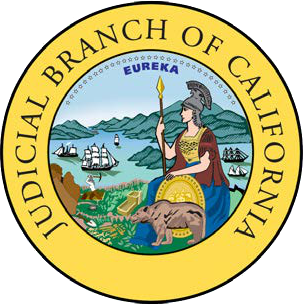
Legal System. (Photo: Billion Photos/Shutterstock)
Frequently Asked Questions about California’s Judicial Branch
How are judicial districts created in this state?
By Chris Micheli, November 23, 2023 6:53 am
What does the California Constitution, in Article VI, Section 1 provide? It says that the judicial power of the state is vested in the Supreme Court, courts of appeal, and superior courts, all of which are courts of record.
What is the composition of the Supreme Court? The Supreme Court consists of the Chief Justice and 6 associate justices.
How is a majority decision rendered by the Supreme Court? There must be an agreement of four judges present at the argument for a judgment.
How are judicial districts created in this state? The Legislature must divide the state into districts with each containing a court of appeal with one or more divisions, and each division consists of a presiding justice and 2 or more associate justices.
How are superior courts created in this state? In each county of the state, there is a superior court of one or more judges and the Legislature prescribes the number of judges and provides for the officers and employees of each superior court.
What is the composition of the Judicial Council? The Council consists of the Chief Justice and one other judge of the Supreme Court, three judges of the courts of appeal, 10 judges of the superior courts, two nonvoting court administrators, four members of the State Bar appointed by its governing body for three-year terms; and one member of each house of the Legislature appointed by that house, all of whom are all voting members; and any other nonvoting members as determined by the voting membership of the Council.
What is the composition of the Commission on Judicial Appointments? The Commission consists of the Chief Justice, the Attorney General, and the presiding justice of the court of appeal of the affected district or, if there are 2 or more presiding justices, the one who has presided longest or, when a nomination or appointment to the Supreme Court is to be considered, the presiding justice who has presided longest on any court of appeal.
What is the composition of the Commission on Judicial Performance? The Commission consists of one judge of a court of appeal and two judges of superior courts, each appointed by the Supreme Court; two members of the State Bar of California who have practiced law in this State for 10 years, each appointed by the Governor; and, six citizens who are not judges, retired judges, or members of the State Bar of California, two of whom to be appointed by the Governor, two by the Senate Committee on Rules, and two by the Speaker of the Assembly.
What is the State Bar of California? The State Bar is a public corporation and every person admitted and licensed to practice law in California is a member of the State Bar, except while holding office as a judge of a court of record.
Who has jurisdiction over habeas corpus claims? The Supreme Court, courts of appeal, superior courts, and their judges have original jurisdiction in habeas corpus proceedings.
Do the state courts have other original jurisdiction? Yes, they have it in proceedings for extraordinary relief in the nature of mandamus, certiorari, and prohibition.
What is the role of the Supreme Court in death penalty cases? The Court has appellate jurisdiction when judgment of death has been pronounced.
Can the Supreme Court take a case from a court of appeal? Yes, the Supreme Court may, before decision, transfer to itself a cause in a court of appeal.
What is the finding that must be made in order to set aside a judgment or grant a new trial in this state? After an examination of the entire cause, the court is of the opinion that the error complained of has resulted in a miscarriage of justice.
Who is responsible for publishing appellate court decisions? The Legislature must provide for the prompt publication of the opinions of the Supreme Court and courts of appeal as the Supreme Court deems appropriate and those opinions must be available for publication by any person.
What are the requirements for being a judge in this state? For at least 10 years immediately preceding selection that person has been a member of the State Bar or served as a judge of a court of record in this State.
Who votes on a retention election for Supreme Court Justices? The judges of the Supreme Court are to be elected at large (i.e., statewide) at general elections.
Who votes on a retention election for Court of Appeal Justices? The judges of courts of appeal must be elected in their districts at general elections.
Can a judge practice law? No, a judge of a court of record may not practice law during the term for which the judge was selected.
Can a judge hold other public office? No, a judge of a court of record is ineligible for public employment or public office other than judicial employment or judicial office, except a judge of a court of record may accept a part-time teaching position that is outside the normal hours of his or her judicial position and that does not interfere with the regular performance of his or her judicial duties while holding office.
When can a judge be disqualified? A judge is disqualified from acting as a judge, without loss of salary, while there is pending (1) an indictment or an information charging the judge in the United States with a crime punishable as a felony under California or federal law, or (2) a petition to the Supreme Court to review a determination by the Commission on Judicial Performance to remove or retire a judge.
What is the role of the Commission on Judicial Performance? It must exercise discretionary jurisdiction with regard to the oversight and discipline of subordinate judicial officers, according to the same standards, and subject to review upon petition to the Supreme Court.
What must the Commission on Judicial Performance do with any disciplinary actions? It must provide to the Governor of any State the text of any private admonishment, advisory letter, or other disciplinary action together with any information that the Commission on Judicial Performance deems necessary to a full understanding of the Commission’s action with respect to any applicant whom the Governor of any State indicates is under consideration for any judicial appointment.
Who determines the salary of judges in this state? The Legislature must prescribe compensation for judges of courts of record.
Who determines whether judges get retirement in this state? The Legislature must provide for the retirement of judges of courts of record for age or disability.
Who appoints court commissioners? The Legislature may provide for the appointment by trial courts of record of officers such as commissioners to perform subordinate judicial duties.
How large is California’s judicial branch of government? California’s judicial branch of government is the largest in the country, handling over 10 million criminal and civil cases each year. There are more than 2,000 judicial offices in this state and over 18,000 employees of the judicial branch. The court system in this state is led by the Chief Justice of the state Supreme Court.
What are the three levels of courts in California? Superior Courts (which serve as the trial courts); Courts of Appeal (the intermediate appellate courts); and, the Supreme Court (the highest court in the state).
Which entity serves as the administration of the courts in this state? It is overseen by the Judicial Council, including the adoption of court rules.
How many justices as the California Supreme Court had at one time on the bench? California initially had a Supreme Court of only three justices, but eventually in the late 1800s a constitutional change established a 7-member high court.
How long are the terms of the Supreme Court justices? They are 12-year terms, followed by a retention election if the justice wants another 12-year term.
Are the Supreme Court’s decisions in writing? Yes, in the late 1800s, their decisions were required to be in writing, as that was not a requirement earlier.
What is the jurisdiction of the Supreme Court? The Supreme Court must review all death penalty cases. The high court has discretion to review appeals from the state’s Courts of Appeal. Cases from the appellate courts are based upon petitions for review and the justices decide to accept or decline the case at their weekly conferences. Only a small number of cases are accepted for review.
Who appoints Supreme Court justices? The chief justice and six associate justices of the Supreme Court are appointed for 12-year terms by the Governor after review by the State Bar’s Commission on Judicial Nominees Evaluation. Appointees are then confirmed by the Commission on Judicial Appointments. At the end of their 12-year terms, justices may also stand for election in order to continue to serve.
Where are the superior courts located? There are over 400 locations and over 2,000 judges located in each of the 58 counties of the state.
What is the jurisdiction of the superior courts? These trial courts have jurisdiction over criminal and civil cases, including specialized areas such as family and probate law.
Who appoints the superior court judges? Superior Court judges are appointed by the Governor when a vacancy occurs and they serve six-year terms. These trial court judges are also elected by county in general elections.
Where are the courts of appeal located? The Courts of Appeal are located in six districts (numbered one through six) and those six districts cover the entire state. There are just over 100 justices who serve on the appeals courts.
What is the jurisdiction of the courts of appeal? These intermediate appellate courts have jurisdiction over appeals from cases tried in the Superior Courts. They also have jurisdiction over cases of habeas corpus (challenging the confinement of someone), mandamus (forcing an official duty), prohibition (restraining action), certiorari (review of a judicial action), and challenges to decisions of certain state boards: Workers’ Compensation Appeals Board, Agricultural Labor Relations Board, Public Employment Relations Board, Department of Alcoholic Beverage Control, and some decisions of the Public Utilities Commission.
Who appoints the court of appeal justices? The Courts of Appeal Justices are appointed by the Governor and confirmed by the Commission on Judicial Appointments. At the end of their terms and in gubernatorial elections, the justices must be approved by the voters.
What is the role of the Judicial Council? It is the policy-making body for the court system. The Judicial Council has 21 voting members and six advisory members and is chaired by the state’s chief justice.
Other agencies that support the judicial branch of state government include:
What is the Commission on Judicial Appointments (CJA)? This commission is charged with reviewing gubernatorial appointments to the appellate courts in this state. CJA is comprised of the Chief Justice of the Supreme Court, the Attorney General, and the most senior presiding justice on the court of appeal of the affected district (for a court of appeals appointee) or the state’s most senior presiding justice of the Courts of Appeal (for a Supreme Court appointee).
How does the Commission on Judicial Appointments operate? When an attorney is nominated by the Governor, the appointee must be reviewed by the CJA. There is a public hearing that is held on the nomination so that the appointee’s credentials can be considered in a public forum. The appointment of a justice is effective once the commission confirms that individual.
What is the Commission on Judicial Performance (CJP)? This commission is charged with overseeing judges in this state. As an independent state agency, it is required to investigate misconduct complaints against California judges and justices, and can discipline judges pursuant to the state Constitution (Section 18 of Article VI). CJP also shares responsibility for overseeing court commissioners and referees along with local courts, which is also pursuant to the state Constitution (Section 18.1 of Article VI).
What happens when a formal charge is filed? Once a formal charge is filed against a sitting judge, then the commission must conduct a public hearing.
What authority does the CJP have? Pursuant to Section 18(d) of Article VI, the CJP has the authority to:
- Remove a judge or censure a judge or former judge for action that constitutes willful misconduct in office, persistent failure or inability to perform the judge’s duties, habitual intemperance in the use of intoxicants or drugs, or conduct prejudicial to the administration of justice that brings the judicial office into disrepute;
- Publicly or privately admonish a judge or former judge found to have engaged in improper action or dereliction of duty; and
- Retire a judge for disability that seriously interferes with the performance of the judge’s duties and is or is likely to become permanent.
What happens when the Commission proposes to remove, censure, admonish, or retire a judge? These rulings are subject to discretionary review by the Supreme Court.
Who is a member of the Commission? It is composed of the following 11 members: 3 judges appointed by the California Supreme Court, 4 members appointed by the Governor (2 attorneys and 2 non-attorney public members), 2 public members appointed by the Assembly Speaker, and 2 public members appointed by the Senate Rules Committee. These appointments are for four-year terms.
- Mistakes in Legal Pleadings - December 23, 2025
- The Division of Property Concerning Retirement Plan Benefits - December 23, 2025
- Enforcement of the UCCJAEA - December 22, 2025




